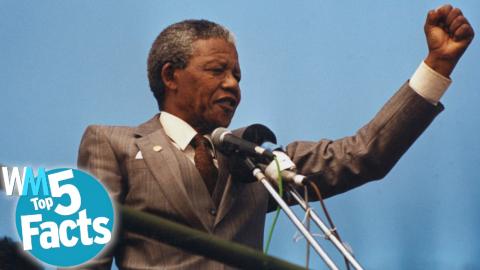Top 5 Apartheid Facts

They say history repeats itself, but segregation has no place in our modern world. Welcome to WatchMojo's Top 5 Facts. In today's instalment we're counting down the Top 5 Apartheid Facts.
In South Africa, the country was divided along racial lines for decades. Under the classifications of White, Indian, Coloured, and African (also referred to as Black), different groups had their respective rights and freedoms limited or stripped.
Despite making up over 73% of the population at the time of Apartheid… those identified as Black received the most inhumane treatment. We'll be exploring the history and horrific realities of Apartheid.
#5: It Arose From a Long History of Repression
While apartheid only officially began in 1948, the wheels had long been in motion. One can arguably trace it’s roots back to the initial seizing of traditional Khoikhoi territory by the Dutch in the 17th Century. By the time the British annexed the Cape Colony in 1815, Khoikhoi and slaves alike were forced to carry passes when travelling. While slavery was officially abolished in 1833, indentured labor laws effectively continued the subjugation of Africans in the colony. In 1913, with South Africa a self-governing dominion, the government passed the “Native Land Act”, which severely restricted the rights of Blacks to own land, limiting them to 7% of the fertile land. Over the next few decades, additional acts were passed to further limit the mobility and rights of Black people and force them into reserves leading up to Apartheid.
#4: The Day-to-Day Realities Were Bleak
Under the rule of the South African National Party, the newly introduced formal system of Apartheid took segregation to the extreme. The only Africans who officially remained in cities, were those there to work, and were not permitted to live outside of the designated areas. They were not to travel without documentation justifying their presence and had access to incredibly limited resources and services. Everything, from beaches to park benches, were for the use of only specific races. But Blacks and other minorities weren’t just second class citizens living in a white world… millions of them were forcefully removed from their homes and relocated into one of 10 “black homelands” known as bantustans. Those who avoided relocation typically lived in impoverished black townships.
#3: Opposition Took Many Forms
From the very beginning, the African National Congress, or ANC, actively protested Apartheid through boycotts and strikes. Despite their actions, conditions continued to worsen, and a decade later, a group separated from the ANC to form the Pan Africanist Congress. Just a year after forming, 69 of their members were killed by police when peacefully protesting in Sharpeville. Criticism over the incident played a key role South Africa leaving the Commonwealth. Both the ANC and PAC were subsequently outlawed by the government, but went underground and embraced armed resistance and sabotage as tactics. In the 1976 Soweto Uprising, students marched against the forced adoption of the Afrikaans language in schools. Police fired on protesters, killing 176 people, many of whom were high school students. By the 1980s, South Africa was the subject of heavy criticism and sanctions from the international community.
#2: A Legendary Figure of Resistance: Nelson Mandela
Among the many radical leaders of the anti-Apartheid Movement, Nelson Mandela is the most widely-known for his efforts, and with good reason. While during his time as a revolutionary his willingness to embrace armed violent action was the topic of heated debate, history now remembers him as a true hero. Shortly after the aforementioned Sharpeville Massacre, he co-founded Spear of the Nation (also known as “MK”) which employed sabotage as its primary means of fighting Apartheid. Mandela allegedly chose this tactic as it was forceful, but nonlethal. He was eventually arrested, and was imprisoned from 1964 to 1990. Four years later… he became the President of South Africa. Controversies and critics aside, he is widely recognized as "a universal symbol of social justice".
#1: The End of Apartheid
We previously mentioned the international pressure put on South Africa to end Apartheid, but even faced with such criticism, the National Party continued to try to defend their system of racial division. Their most notable attempts came in the form of various Apartheid reforms. They repealed the legislation that had previously prohibited interracial marriage and sex. They also desegregated some public places, such as beaches, and repealed “pass laws” in the late 80s. But such attempts at compromise were, unsurprisingly, laughably ineffective at quelling resistance or pacifying the international community. In 1989, President Botha, under whom such reforms had taken place, was replaced by F.W. de Klerk, who made his agenda clear - serious change. Mandela was released, anti-apartheid groups were made legal and over the next few years, Apartheid was slowly deconstructed, culminating in the 1994 elections and Mandela’s presidency.
